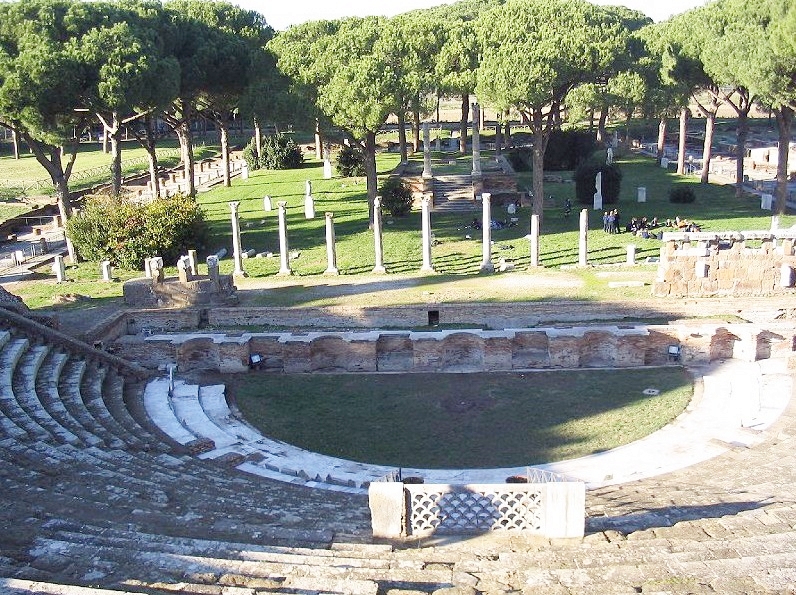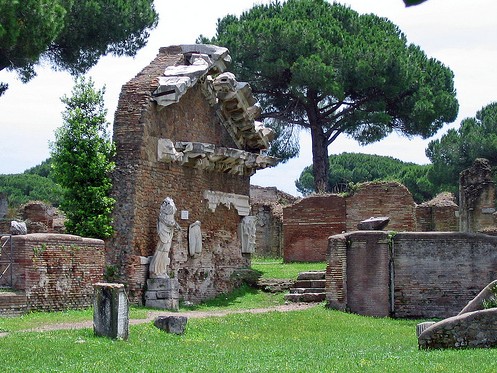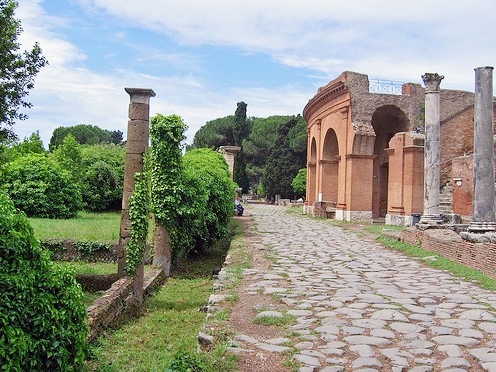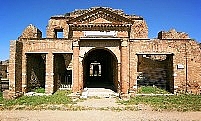Ostia Antica, RomeOstia Antica, RomeAbout 20 miles from Rome, on the meadows cradled between the Tiber River and the Tyrrhenian Sea, lie the romantic ruins of the Ostia Antica. Ostia Antica was established in the 4th century BC. Historians believe that it was a military colony which protected the river mouth—and Rome—from any attackers coming in from the sea.  As Rome began trading with other civilizations, and the Tiber River became an important water route, Ostia Antica rose to the role of being a key domestic landing for cargo boats. The city population grew to over 100,000, and this once sleepy military outpost became a bustling commercial center. Soon, its streets were lined with apartment buildings, inns and taverns, and supermarkets. In fact, many of these structures are still intact. The city boundaries also grew to10,000 acres, with a main street that stretched to an impressive one-mile length.  One of the key features of Ostia Antica was the Baths of Neptune, which boasted of a beautiful mosaic—extraordinarily well preserved to this day—that measured 55 feet. It also had an ampitheater, which was operational in 12 BC. It could hold about 3,500 people who would sit from the stone bleachers and cheer on the favored entertainment of the time: races, plays. The Forum, on the other hand, was considered the center of political discussion. Senators converged here to discuss policy and law. As a center of trade, the Ostia Antica was also home to 64 maritime companies, with connections as far as Spain, India, or Africa. There were also numerous temples, including the Temple of Ceres. Soldiers, on the other hand, often went to the Temple of Rome and Augustus to offer their sacrifices for a victorious battle. A synagogue lay outside the city for the Jews that the Romans did trade with.  The Romans were famous for their ability to enjoy the good life, and the Collegiate Temple—a social club—was often the stage for seven-course meals that lasted from 3 pm to dawn. There were also restaurants and cafes. Ostia Antica also had four-story apartment buildings, many of which had inner courtyards and even swimming pools and a communal latrine. These could be considered the equivalent of the ancient condo complex. 
|